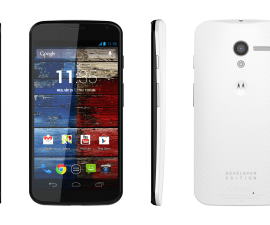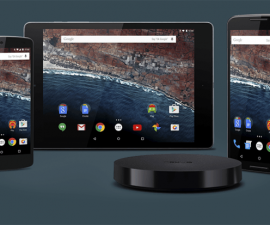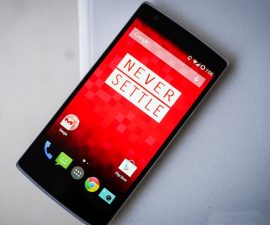A Review of 3 Motorola Android phones

Motorola released three rather excellent smartphones last year, the Moto X, the Moto G and the Moto E. For 2014, they put a lot of effort into making three flagship level devices available in the market, the Moto X (2004), Nexus 6 and Droid Turbo.
While these three devices are all flagship quality, there are differences in many areas such as battery life and screen size. In this review we take a closer look at just how these three compare to each other.
Design
- Moto X (2014) and the Nexus 6 are the two that actually look most alike. The only real difference in appearance is their screen sizes.
- The Moto X (2014) and the Nexus 6 have the same camera and use the same materials. Both have metallic edges.
- Only major design change between the Moto X (2014) and the Nexus 6 is the Nexus logo present in the Nexus 6.

- The Droid Turbo shares the same design characteristics as previous Droid handsets.
- The Droid Turbo comes in two imitation Kevlar finishes, metallic (metal-coated fibreglass) and military grade ballistic nylon.
- The front of the Droid Turbo is different from the Moto X (2014) and the Nexus 6 with capacitive keys not the software keys of the other.
Display
- When it comes to the device display, it’s the Moto X (2014) and the Droid Turbo that are similar. They have the same display size, 5.2-inches.
- The displays of the Moto X (2014) and the Droid Turbo are much smaller then the Nexus’ display.
- The Moto X (2014), the Droid Turbo, and the Nexus 6 all feature AMOLED displays.

- While all three phones use the same display technology, there are differences in the resolution.
- The Droid Turbo uses a QHD display with a resolution of 1440 x 2560 for a pixel density of 565 ppi.
- The Moto X (2004) has a Full HD display with a resolution of 1920 x 1080 for a pixel density of 423 ppu.
- As mentioned, the Nexus’ display is bigger than that of the other two at 5.9 inches. It has a QHD display like the Droid Turbo but has a slightly lower pixel density of 496 ppi.
- All three of these devices’ displays are solid and present good images. But if you really want the best picture quality, go for the Nexus 6 or the Droid Turbo.
Processor
- The Nexus 6 and the Droid Turbo have the same processing package. They both use a 2.7 GHZ quad-core Snapdragon 805 backed by an Adreno 420 GPU with 3 GB of RAM.
- The Moto X (2014) uses a 2.5 GHZ quad-core Snapdragon 801 with an Adreno 330 GPU and 2 GB of RAM.
- While the Nexus 6 and Droid Turbo’s processing package are newer and more powerful than that of the Moto X, all three devices are more than capable of offering their users a fast and reliable experience.
Storage
- All three of these devices offer at least two models with different amounts of storage.
- The Droid Turbo and the Nexus 6 come with either 32 GB or 64 GB of storage.
- The Moto X (2014) offers 16 GB and 32 GB of storage.
- All three of these devices don’t have microSD.
Battery
- The Droid Turbo has a 3,900 mAh battery unit.
- The Moto X (2014) has a 2,300 mAh battery unit.
- The Nexus 6 has a 3,220 mAh battery unit.
- The Moto X (2014) offers the weakest battery of the three though battery life is acceptable.
- The Nexus 6’s battery life lasts for about a day and a half.
- The Droid Turbo is the device that offers the best battery life. It’s said to be capable of lasting two full days on a single charge.
- Both the Nexus 6 and the Droid Turbo have quick charging technology which means that you can fast charge your phone as needed.
Camera
- The Moto X (2014) and the Nexus 6 both have a 13MP rear camera and 2MP front camera.

- The Droid Turbo retains a 2MP front camera but has upgraded to a 21MP rear camera.
- While the Moto X (2014) and the Nexus 6’s camera take decent photos, the Droid Turbo offers the best camera experience amongst the three.
Software
- The Nexus 6 uses Android 5.0 Lollipop
- The Moto X (2014) and the Droid Turbo use Android 4.4.4 Kitkat, though they are set to start using Lollipop in the next months.
All three of the devices are solid handsets that Motorola can be proud of.
While the original Moto X offered a good user experience, it lagged behind other flagships in terms of specs. The Moto X (2014) retained the good aspects of the previous model and enhanced it with early/mid-2014 specs.
The only drawbacks with the Droid Turbo are that this phone cannot be customized through the Moto Maker and that it is only available for use with Verizon’s network.
The Nexus 6 handset is actually a pretty good blend of both the Droid Turbo and the Moyo X (2014). It’s a mega-sized Droid Turbo with less battery life and with the aesthetics and camera of the Moto X (3014). If you love big screens, the Nexus 6 is the good choice. Also, as it’s part of the Nexus line, this means that it’s going to be first in line for any Android updates for at least the next two years.
Which of these three, the Moto X (2004), Nexus 6 and Droid Turbo, sound like the best for you?
JR
[embedyt] https://www.youtube.com/watch?v=c98e62HOuKg[/embedyt]







